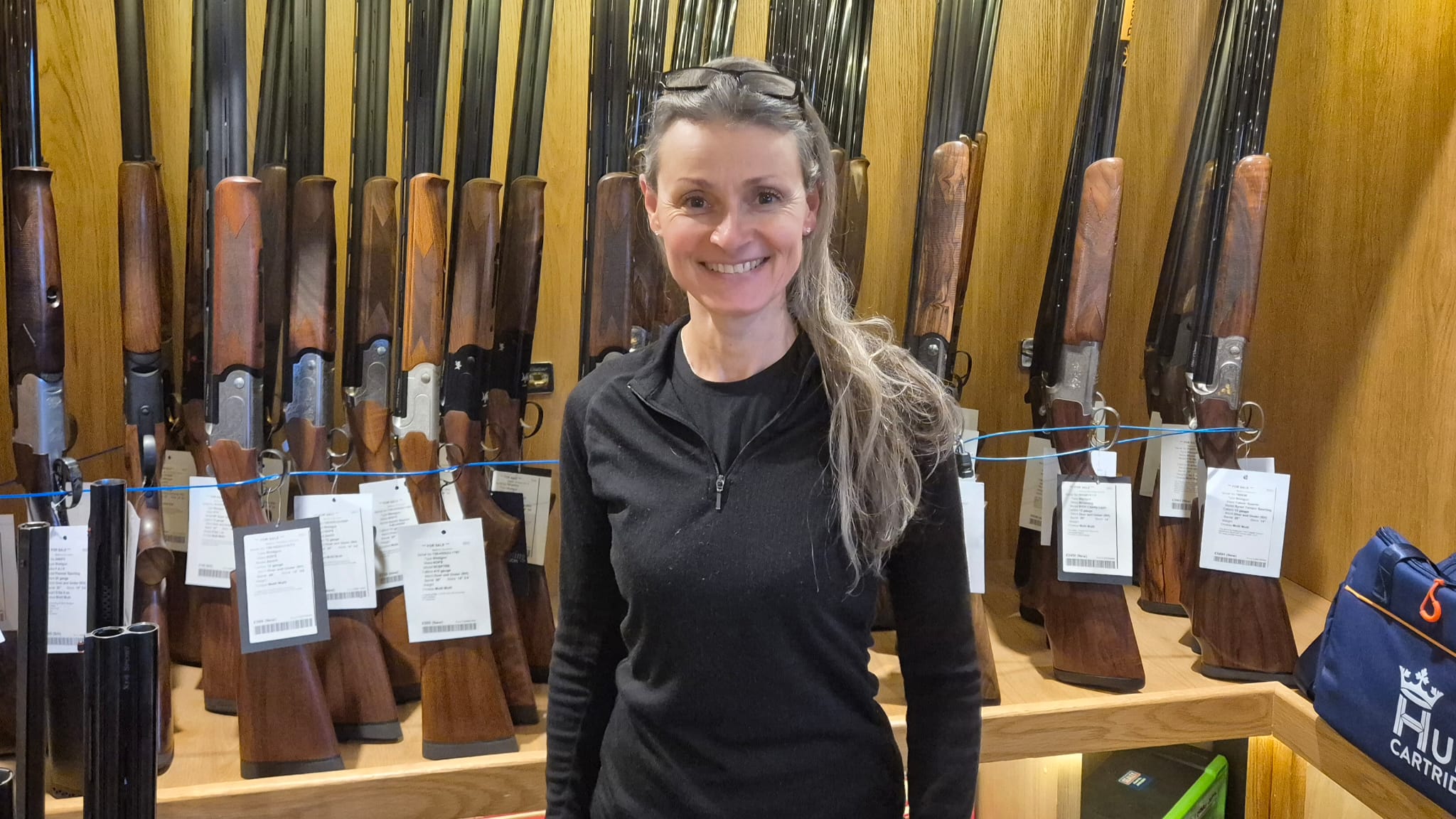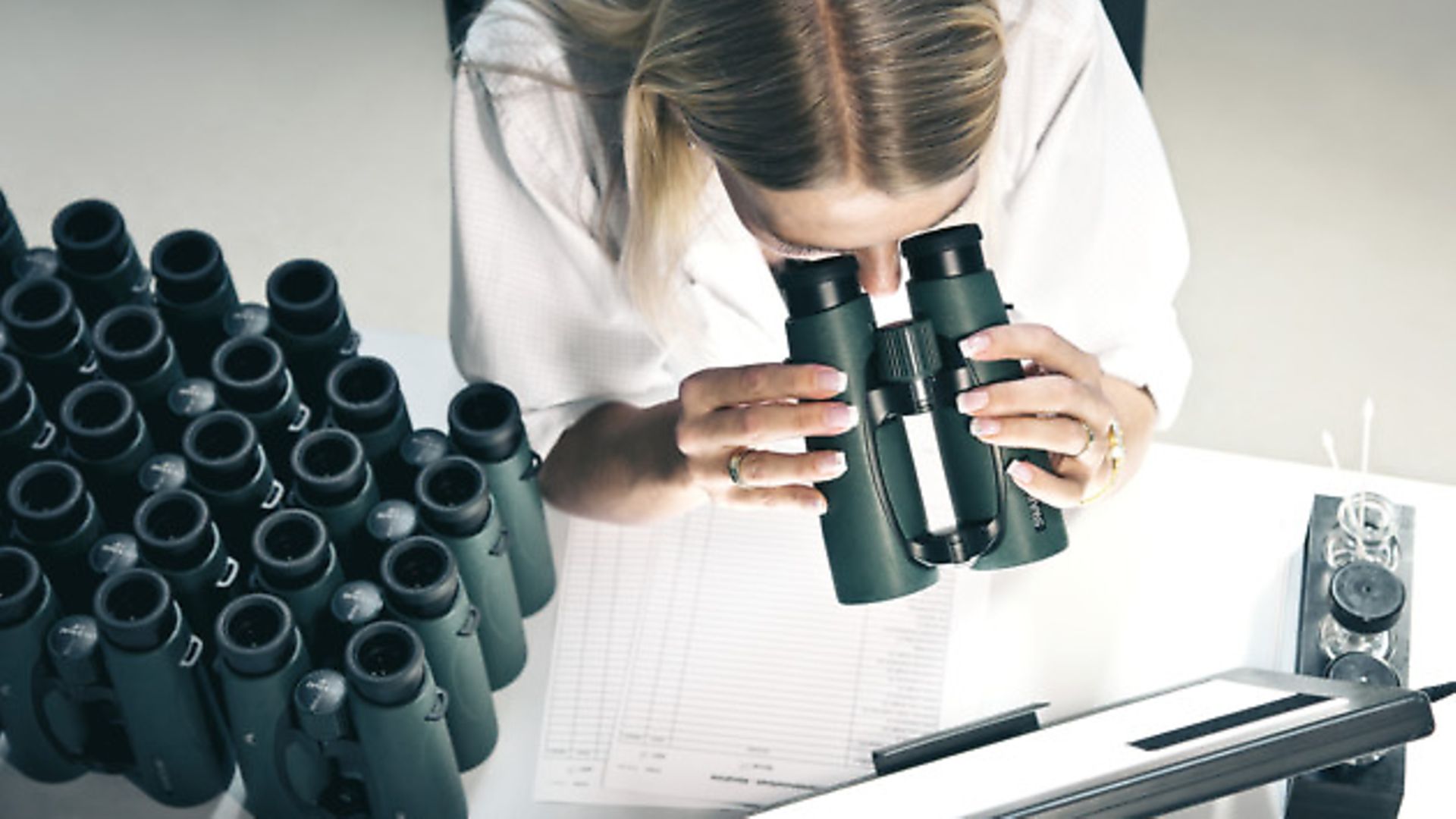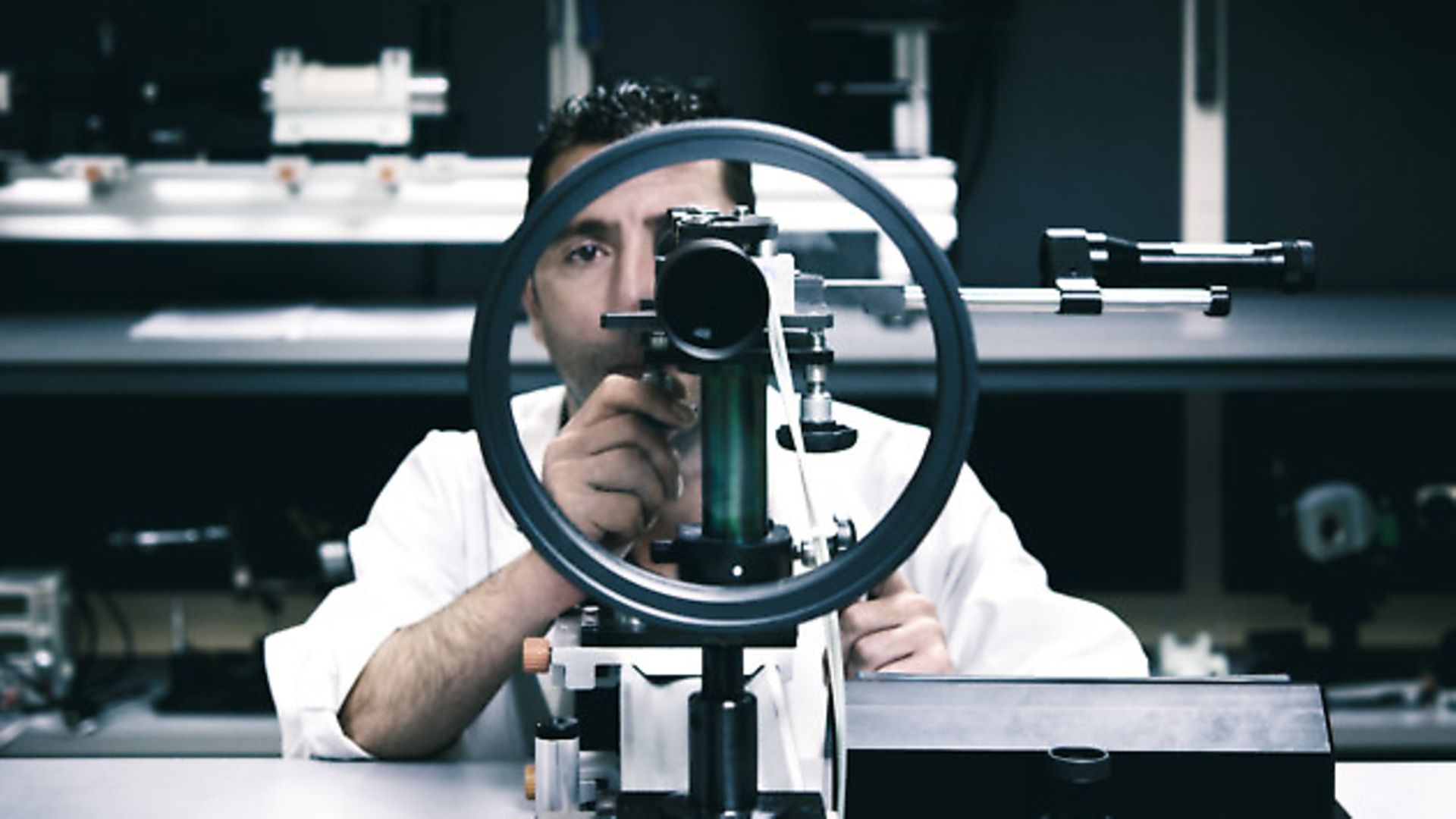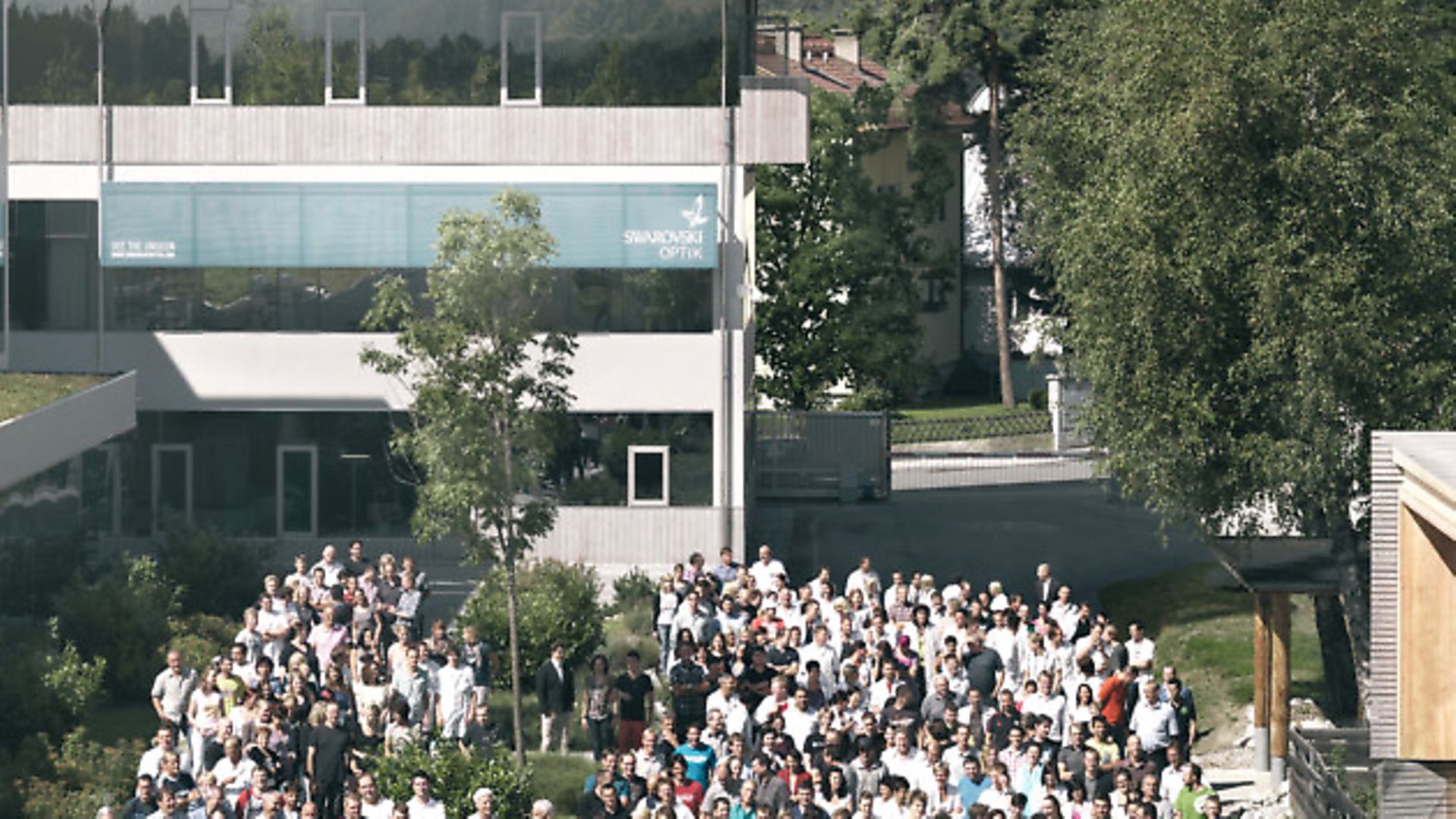People Power – We Visit the Swarovski Factory
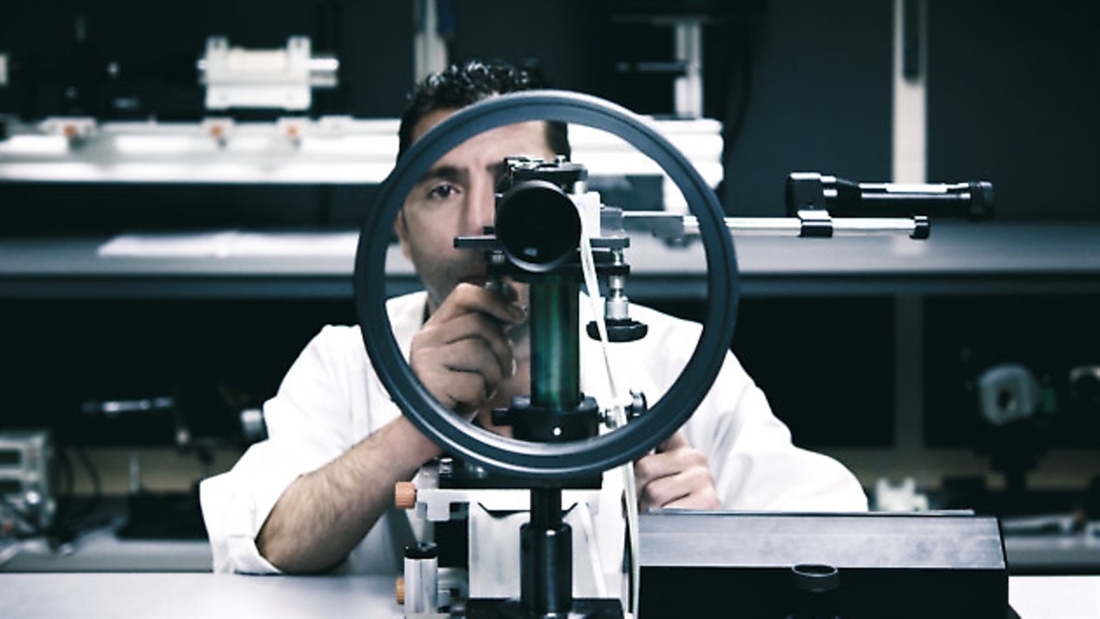
What makes Swarovski products so special? Rebecca Green goes behind the scenes at the Swarovski Optik factory in Austria to find out
For hunters all around the world the name Swarovski conjures up a sense of something special. For me, on a recent visit to the Optik HQ in Austria, that sense begins as soon as you begin your ascent to the factory, situated in the stunning mountains of Absam, Tyrol where even the roads and bus stops en-route carry the Swarovski name.
With over 700 employees, the Swarovski Optik factory is the largest employer in the area and it takes this role very seriously. There is an on-site crèche for employees with young children, an excellent canteen serving freshly-cooked food, and a strong feeling that Swarovski genuinely cares about its workers. The fact that the longest serving employee has worked at the factory for over 45 years; that most stay for a minimum of 15; and that entire families work there, tells me it must be a pretty good place to work. Indeed, everyone I speak to is enthusiastic and passionate about what they do, which, of course, shows in the end product. For unlike some other brands, every scope, every binocular that comes out of the Swarovski factory is crafted by people – skilled workers using state-of-the-art technologies.
To help recruit these skilled workers, Swarovski runs three- and five-year apprenticeship schemes on-site. If you complete your education with them, you have a guaranteed job. “In the first year the apprentices do a lot of work by hand to get a really good feel for the products and raw materials and understand the reasoning behind some of the machining processes,” says Lydia, Swarovski Optik’s PR manager and my host on the tour. “For instance, they will do a lot of grinding, sanding and polishing by hand to get an understanding of the glass before they learn about the machining.”
There is a lot to understand. The glass used in the binoculars and scopes is not ‘normal’. “If we used normal glass for the lenses we would lose 6% of light per air-to-glass surface” explains Lydia. “So we use 100 different sorts of glass, together with different coatings to reduce light loss to just 2%.”
Perhaps one of the most astounding aspects of the glass work is the test to ensure that these prisms are true right angles. The purpose of the prism in a binocular is to turn the image the user sees back to upright. It is also responsible for the contrast of the image. Production starts with a basic prism shape which is then refined through a lengthy process of machine grinding, polishing and fine polishing – a process which the apprentices first learn by hand. Getting the perfect angle in the prism is critical and it is measured using a glass block tool (made in the factory to be sure it is exact). If they are true right angles, the prisms stay attached to the glass block just by having the correct angle. The only way to separate them is by knocking them with a special hammer.
The apprentices also learn how to construct the binocular and scope housings by hand, starting out with the manual machines before moving on to the CNC machines. After the first year they are tasked with making their own clocks. This is a longstanding Swarovski tradition and a fascinating array of students’ clocks adorns the walls of the machine rooms. It’s a nice touch.
Moving away from the apprentice workshops, we go into the production areas. Here, understandably for a product as specialised as Swarovski, I cannot be shown all the secrets to their success. However, in the lens production area I get to see the grinding and polishing machines at work. Known as Optotech machines, these take the lenses from trays, one by one, and work on them from both sides, grinding and polishing. Then they go to the checking station. Endless checks – both human and mechanical – are made on each product during the entire production process.
These quality checks are crucial in order for really high-end products to be produced. The optical quality of the glass is checked using an interferometer device which uses laser beams to reflect from a perfect surface back through the glass of the binocular. The machine sits on a granite block and then on an air pillow to eliminate any vibrations and ensure precise measurements.
In the mechanical production area this precision is just as critical. Temperature is controlled and the floors are made from concrete 18cm thick to get rid of any vibrations and enable the tolerances to be met. With the metal housings Swarovski works down to tolerances of a staggering 0.001mm – that’s less than the width of spider’s silk.
“For the optics, you can add a few zeroes on to that figure,” says Lydia, adding: “These exact measurements are the reason the metal-on-metal parts operate so smoothly, without needing to add grease, which is what some of the cheaper brands use to hide their less precise measurements.” Again, quality control in the mechanical department is stringent – checks are made to check that the machines’ checks are correct! It’s done using granite blocks and lasers, but not on every unit.
The metal housings are machine-made, then hand-finished. After shaping they are anodised to make them stronger and resistant to corrosion and harsh conditions. The anodising process changes the material, rather than coating it, which is what makes Swarovski binoculars and scopes so robust.
In the assembly room, the products as we know them start to take shape. Highly skilled workers bring the component parts together, working in special air-controlled units where air is blown downwards to ensure no dust or dirt gets inside the product. The attention to detail and precision required at this stage is astonishing. Workers have to take frequent breaks, such is the demand placed upon them here.
I am struck, as indeed I have been throughout my visit, by one simple fact. If the workers didn’t genuinely care about what they are doing, it wouldn’t work. Ultimately, it is this combination of highly skilled, dedicated workers and an obsessively precise process that produces these masterpieces of innovation that every hunter wants to own. n


